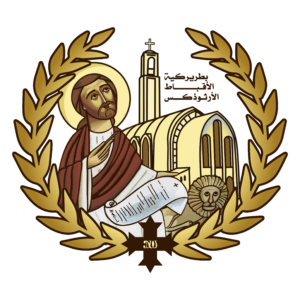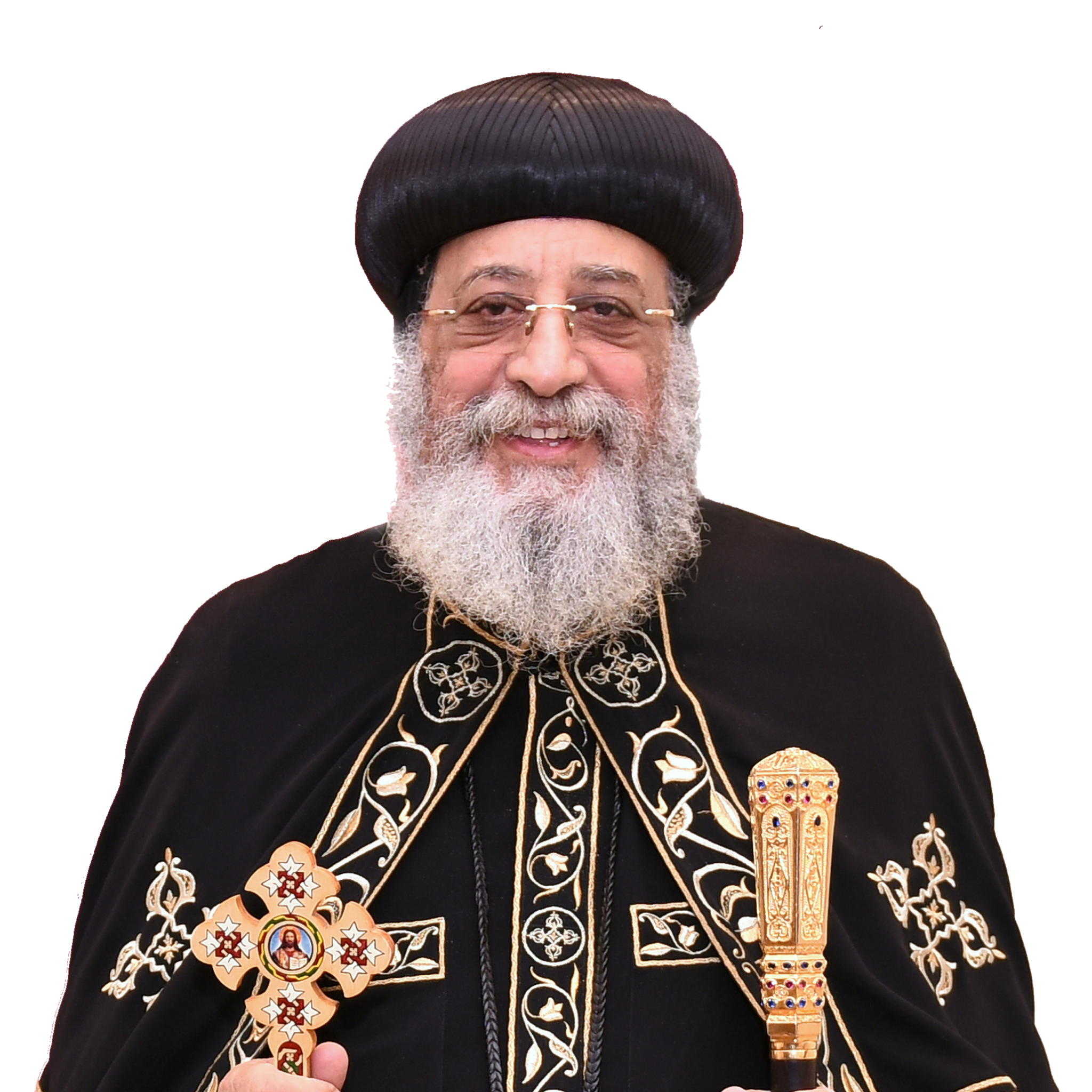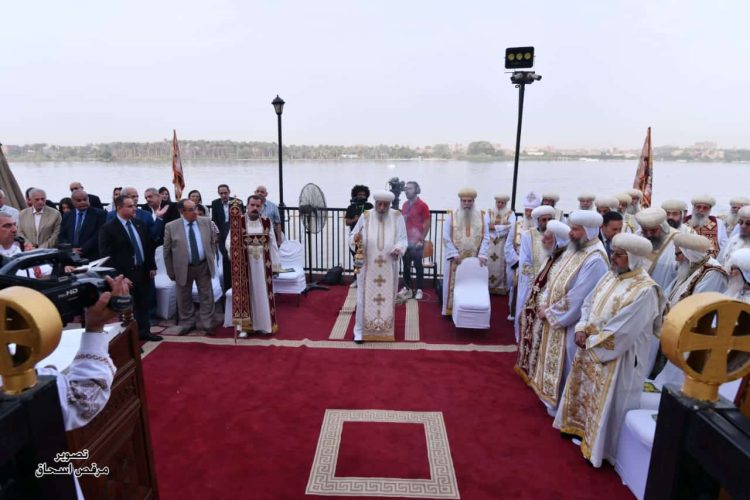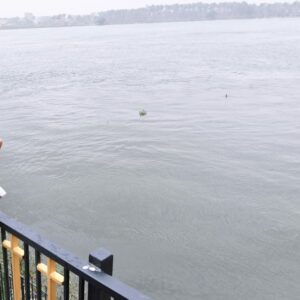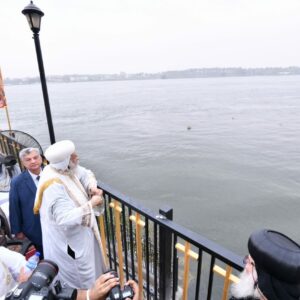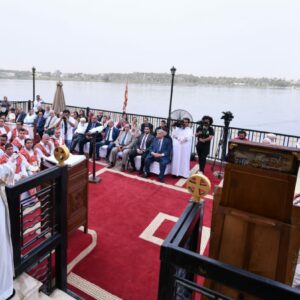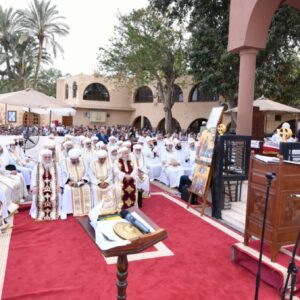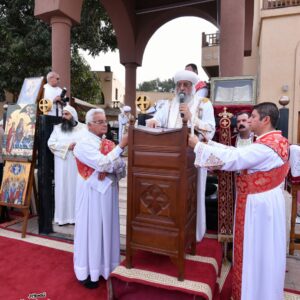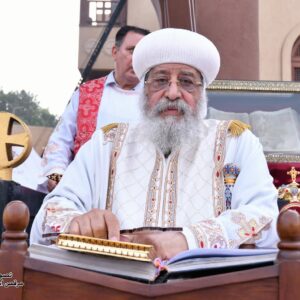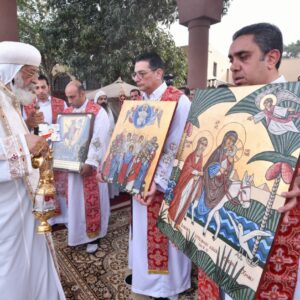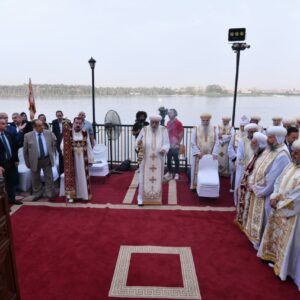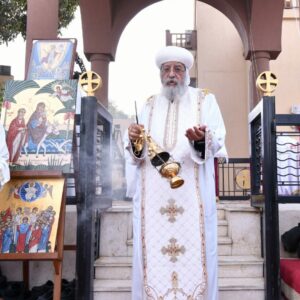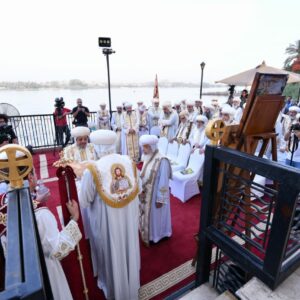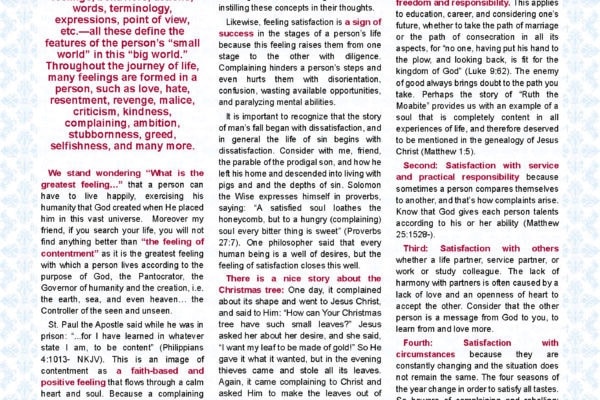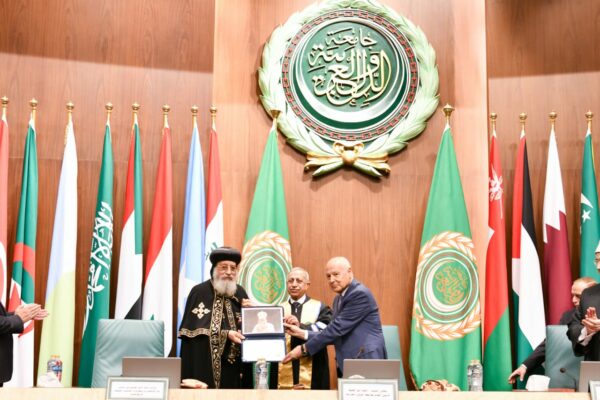His Holiness Pope Tawadros II prayed this morning the Liturgy of the Entry of Christ into the land of Egypt at the Church of the Virgin Mary in Maadi, which is one of the stops visited by the Holy Family during their tour in the land of Egypt.
A number of metropolitans, bishops, priests, deacons of the church and the congregation participated in the liturgy prayers.
H.H. blessed the waters of the Nile on which the church is located, by sprinkling the blessing water in it, after the end of the liturgy, which was held in the open air in the area directly overlooking the Nile.
His Holiness indicated in the sermon of the liturgy that this feast is an Egyptian and ecclesiastical feast that we are unique to in the land of Egypt next to the Nile, and also it is one of the Lord’s feasts and is celebrated on the same day each year, as we celebrate it on the 24th of Pashons and the 1st of June every year.
Christ gave a special privilege to Egypt when He came to it and lived there with our mother, the Virgin Mary, and Saint Joseph (the keeper of the secret of the incarnation), which made this feast its significance, history, and impact on our Egyptian life, and asked a question:
Why did Christ come to Egypt?
1. In order to end the pagan life spread in Egypt and eradicate it from the whole world, which was indicative that man is looking for a powerful God, so the idols and worships multiplied, then the world began to ascend and turn towards the living God. History records that when the Lord Christ entered Egypt, the idols were falling on their faces and being destroyed, as we see their effects in Tell Basta and others, so it was the end of paganism, and this was an important development in human life.
2. In order to bless our land, its soil and its waters, and that is why we mention in the scriptures, “Remember, O Lord, the waters of the river. Bless them.” We feel the blessing in our lives, and from the great history of Egypt we see that it was filled with very great blessings. Despite the tribulations and hardships that it experienced throughout history, we find that these tribulations end and Egypt is resurrected again. The blessings appear in its water, air, nature and geographical shape. Egypt is characterized by having a square geometric geographical shape, which has two lines on the waters, they are the White Sea, which we call “the sea of rivers,” and the Red Sea, which we call “the sea without rivers,” and two other lines on the desert.
Also, by looking at the map, we see that the Nile River passes in the middle of it, and its two branches – Damietta and Rashid – symbolize the person raising his hands to pray.
It is as if we take the spirit of worship from the river, just as our lives begin with water through the sacred sacrament of baptism, and people were baptized in the waters of the Nile River before the existence of the baptismal font.
Despite the cases of emigration from Egypt, Egypt occupies the heart in the body of the Coptic Church spread throughout the world, and no one can live without his heart, and we will find forms of blessing in the lives of Egyptians in health and coverage through the homeland, political life, and economic crises.
3. In order to teach us one of the powerful spiritual principles in human life, which is “Escape for your life”, because a person is exposed to many weaknesses and falls into multiple sins, therefore one of the principles of spiritual safety is the principle of distancing, that is, for a person to avoid the trap of temptation and evil.
“And do not lead us into temptation” (Matthew 6:13).
So we celebrate this feast not only because it is historical or ecclesiastical, but for our souls and benefit in our lives, and to move away from evil and sin.
His Holiness added that we talk about Egypt twice a year, one of them on Christmas Day, and the second time on the feast of the entry of Christ into Egypt, and this teaches us the national belonging within our churches.
This page is also available in:
العربية
